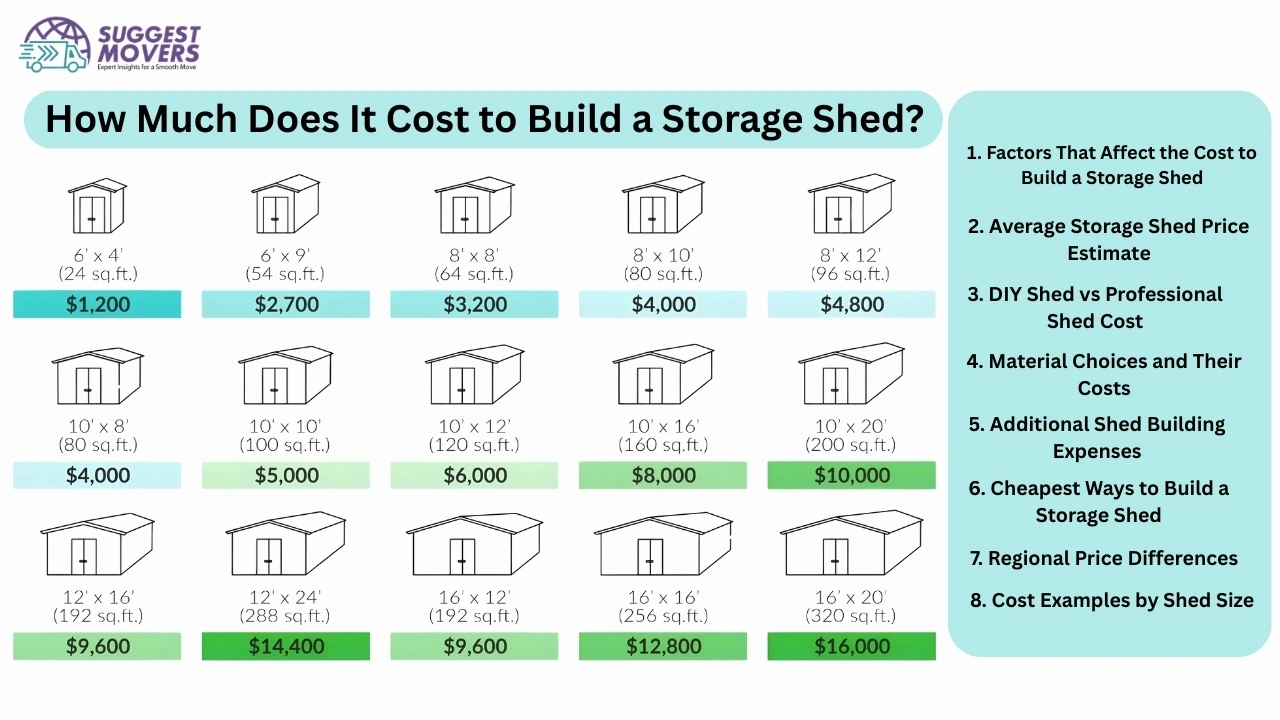How Much Does a Refrigerator Weigh? A Complete Guide
Jason Tucker
- March 18, 2025
- 8 Min Read

When you’re planning a move, buying a new appliance, or renovating your kitchen, you must know how much a refrigerator weighs. Fridge weight affects delivery, installation, floor safety, and transportation. From compact dorm-size to enormous commercial fridges, you will have an impressive weight spectrum.
In this guide, you’ll discover the refrigerator weigh variations by model type, learn what influences weight, and get clear advice on how to move fridges safely.
How Heavy Is a Refrigerator?
Let’s answer the big question: how heavy is a refrigerator? Each model style has a different structure, internal capacity, and features that directly influence its weight.
Typical Refrigerator Weights by Type:
Type | Average Weight |
Top-Freezer | 160–200 lbs |
Bottom-Freezer | 200–250 lbs |
Side-by-Side | 250–300 lbs |
French Door | 300–400 lbs |
Built-In or Commercial | 400–800+ lbs |
A side by side refrigerator will weigh more than a top-freezer because there are more compartments, built-in ice dispensers, and usually, a larger internal capacity. A French door fridge weight will simply weighs over 350 pounds because of its large storage capacity and intelligence.
How Much Does a Mini Fridge Weigh?
If you live in a dorm, office, or small space, you might be employing a mini fridge. These mini fridges vary in size and each of them has a different weight of a mini fridge.
Mini Fridge Weight Breakdown:
- Cube Style (1.7 – 2.4 cu. ft.): 30–45 lbs
- Standard Mini (3.2 – 4.5 cu. ft.): 50–70 lbs
- Mini Fridge with Freezer: 60–80 lbs
You can usually move a mini fridge by yourself, but still use good lifting form and bracing. Always check the specs to know how much the refrigerator weighs before placing it on a shelf or thin stand.
How Much Does a Small Refrigerator Weigh?
Small refrigerators are perfect for apartments, RVs, and tiny kitchens. Although larger than mini fridges, they are still not very large in size and weight.
Small Refrigerator Weights:
- 7 – 9 cu. ft.: 90–120 lbs
- 10 – 12 cu. ft.: 120–150 lbs
Manufacturers build these fridges with an aim for functionality with space economy. Even though they are less heavy than regular ones, you must still be aware of their appliance weight before installing or relocating one.
How Much Does a Fridge Freezer Weigh?
If you own a model that also has a freezer compartment in its fridge, your model is a fridge-freezer model. They come in various formats, and each format has differences in weight considerations.
Fridge Freezer Weights:
- Top-Freezer: 160–200 lbs
- Bottom-Freezer: 200–250 lbs
- Side-by-Side: 250–300+ lbs
- French Door: 300–400+ lbs
The weight of double door refrigerator model tends to increase because of added material, heavy doors, shelves, and internal hardware. That bulk is what makes the refrigerator weigh much heavier than standard units.
What Impacts Refrigerator Weight?
Several factors decide how much a refrigerator weighs. Let’s talk about what adds pounds to those appliances:
1. Size and Capacity
Bigger refrigerators will naturally weigh more. When you choose a standard fridge size of 20–26 cu. ft., you can look for heavier frames and more efficient compressors.
2. Materials and Build
Top-of-the-line models use stainless steel, tempered glass, and thicker insulation. These upgrades add to the standard fridge weight significantly.
3. Technology and Features
Features like ice dispensers, smart sensors, and LCD panels require additional hardware. Such features contribute to the overall weight of the refrigerator without adding to its size.
4. Cooling System and Compressor
Energy-saving models come with inverter compressors, which are heavier. But you have the benefit of an energy efficient refrigerator that uses less power and is quiet.
5. Shelves, Drawers, and Compartments
When you opt for a multi-drawer, door bin, or glass shelf fridges, you are contributing to the fridge specs and weight.
How Much Does a Commercial Refrigerator Weigh?
If you’re running a business or commercial kitchen, then chances are you’re operating commercial-grade cooling units. These fridges are large, powerful, and extremely heavy.
Commercial Fridge Weight Examples:
- Glass-Door Beverage Cooler: 250–400 lbs
- Double-Door Upright Unit: 600–800 lbs
- Walk-In Cooler (Large): 1,000+ lbs
These units come with enhanced cooling, steel panels, and added insulation. The commercial refrigerator weight typically requires freight transport and reinforced flooring.
How Heavy Are Popular Refrigerators?
Let’s compare some of the best brands’ weights:
Brand | Model Type | Approx. Weight |
Whirlpool | Top-Freezer | 180 lbs |
French Door | 330 lbs | |
Samsung | Side-by-Side | 290 lbs |
GE | Bottom-Freezer | 240 lbs |
Frigidaire | Mini Fridge | 45 lbs |
Bosch | Built-In | 500+ lbs |
These brands give you a baseline for comparing the average refrigerator weight before you make a purchasing decision.
How to Move a Refrigerator Safely
You don’t need professional movers to move every refrigerator—but you do need smart techniques.
Steps to Move a Refrigerator:
- Unplug and Defrost: Do this 24 hours before to prevent leaks.
- Empty Everything: Take out food, shelves, and bins to reduce the fridge weight.
- Secure the Doors: Tape or use bungee cords to close doors.
- Use a Dolly or Cart: Make sure the tool can move your standard fridge weight.
- Lift Carefully: Use help and don’t bend the fridge beyond 45 degrees.
Lighter models can be lifted by yourself, especially a compact refrigerator, but always be careful and preserve your back and floors.
Safety Methods While Moving Refrigerator
Make a Safe Move
When you have an idea of the weight of your refrigerator, you are able to use the right equipment and stay clear of accidents. A dolly, moving straps, and a helper make moving much safer.
Empty the fridge
Keep only external food, drink and loose appliance shelves to make the load as small as possible to prevent any internal injuries.
Defrost and clean
Prepare the interior and exterior for some house and fresh cleaning, with the cutting out of any odors. Remove all the elements and defrost the fridge for 24 hours before moving so that it will not leak.
Secure the doors
Strong tape or bungee cords are used to shut doors during moving.
Use a dolly or appliance cart
Move that refrigerator without it falling by using a heavy-duty appliance dolly and tight strapping on that cart.
Store Refrigerator
Such heavy objects as refrigerators need at least two or more people to assist in lifting or moving them.
Protect Floor and Wall from Damage
Floor damage and scuff marks on walls will be prevented by placing cardboard or moving blankets underneath the refrigerator.
Best Practices for Storing Refrigerators
You should consider a climate-controlled facility should you need to store your refrigerator, perhaps temporarily, due to house moving or remodeling. This sort of environment protects sensitive electronic parts from excessive moisture and prevents mold or destruction by maintaining a relatively constant temperature.
Weight Considerations for Disposal and Recycling
Its weight is relevant in disposing or recycling the refrigerator because it will determine some of the costs of removing and holding it in handling safety.
Many municipalities have such recycling centers that charge fees based on weight for bulky appliances that always check local disposal instructions and environmental compliance.
Hiring professional movers
For some movers, hefting really heavy metals is just not on their menu. Therefore moving companies exist that specialize in moving heavy appliances or equipment. Just make sure you inquire about their experience in doing moves with refrigerators and other heavy equipment.
Keep In Mind:
- Overall, most refrigerators could vary between a weight of 30 pounds compact mode models being to above 1200 pounds commercial large units.
- Because size and material of the refrigerator generally determine its weight, that weight will vary only according to the added features.
- In moving the refrigerator, it is necessary to secure muffles and doors, take a dolly, and enlist extra help.
- Rent a climate-controlled storage unit for storing the fridge for a long period.
Conclusion: Know Your Refrigerator Weight
So it all boils down to type and size:
- Mini Fridge: 30–80 lbs
- Small Refrigerator: 90–150 lbs
- Top-Freezer/Bottom-Freezer: 160–250 lbs
- French Door/Side-by-Side: 250–400 lbs
- Commercial or Built-In: 500–1,000+ lbs
When you know your refrigerator weigh for your specific model, you increase safety, avoid cost surprises, and are a more informed consumer. Always consider size, material, and features before you go to move or have your new appliance installed.
Some may be slightly lighter depending on the brand and design but most full size French door units fall within this range. In addition to the size, the weight additionally accounts for further components like ice makers, water dispensers and dual cooling systems.
For plenty of reasons a refrigerator weighs quite a lot.
- Durable materials: They are made with thick metal frames and doors, which add to the weight.
- Insulation: High grade insulation is necessary to keep food cold and safe and thus contribute to the bulk.
- Internal components: Motors, compressors, coils and other metal parts are dense and heavy.
- Added features: An ice maker, a water dispenser and a few other very useful gadgets.
Food adds an extra 30–50 pounds on average. Frozen foods are heavier than fresh foods.
You can move a mini fridge or compact unit on your own if you use a dolly. For heavy fridges, always enlist assistance.
Not necessarily. Some built-in fridges weigh more due to materials, not power.







